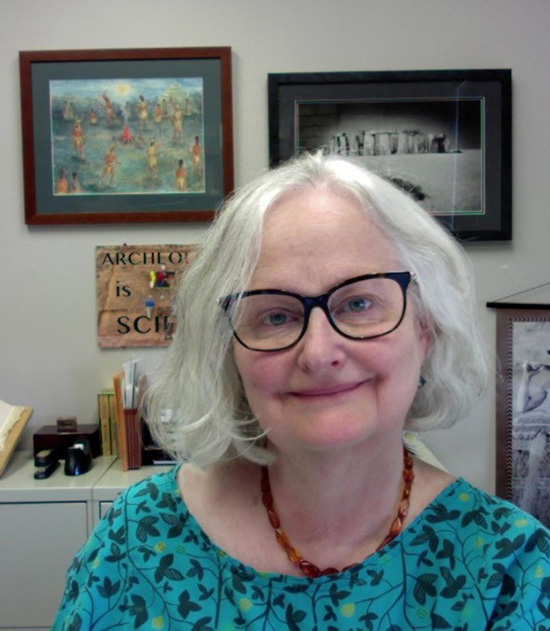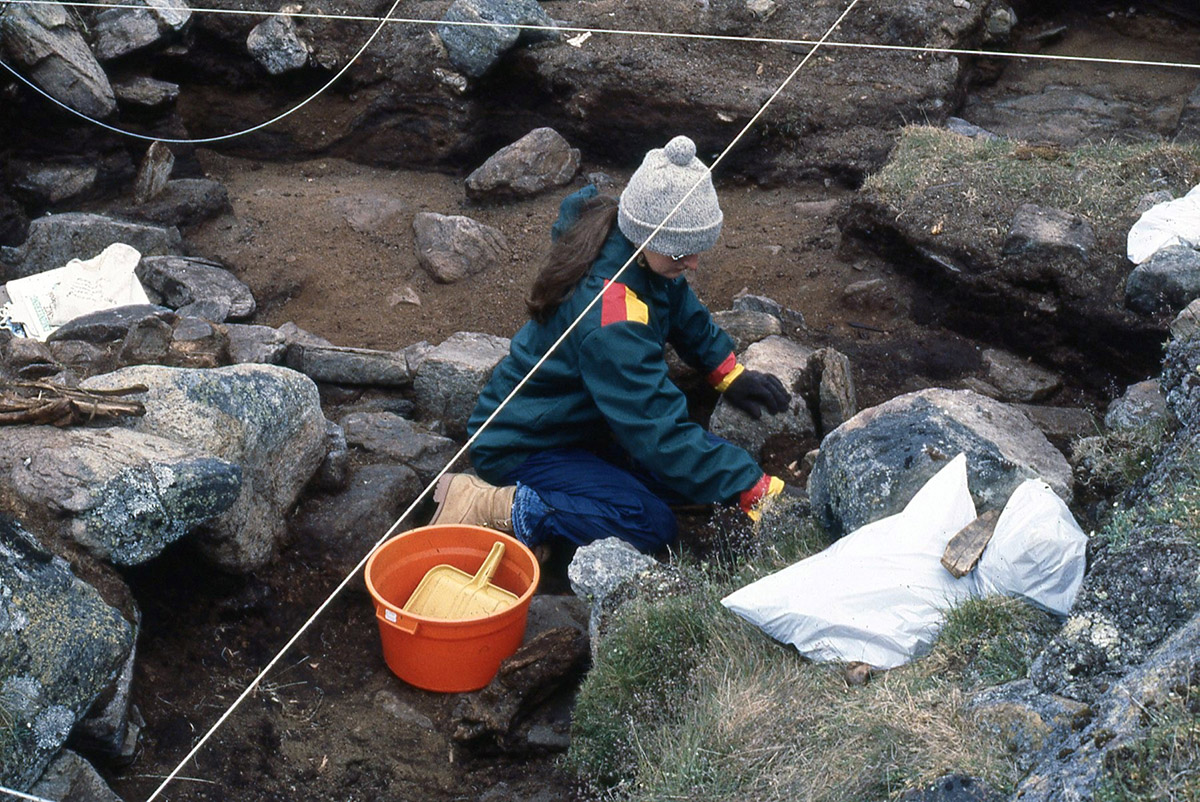By Hieronymus Anonymous

After 22 years, Deborah Sabo retired from the Arkansas Archeological Survey at the end of June. Born and raised in Detroit, Deborah earned her BA in Anthropology at Wayne State University in 1974, and MA in Anthropology at Michigan State University in 1978. She moved to Arkansas in the summer of 1979 along with her spouse, George Sabo III, when he was hired to replace Mark Raab as the Research Station Archeologist in Fayetteville. One of her first activities in Arkansas was to assist as a (volunteer) field supervisor at the Huntsville Mounds site during field school excavations directed by George. Before this, Deb had worked on archeological sites in England, Italy, northern Michigan, and Baffin Island (where she excavated the infamous “Viking figurine” at the Okivilialuk site). Her first few years in Arkansas were punctuated by occasional participation in salvage fieldwork, and a brief stint in the ARAS Registrar’s office, helping to process maps from the Village Creek project. She was appointed as a temporary Instructor to teach Intro courses in the Anthropology Department at UAF over several years and developed a unit on stereotypes of non-Western pre-industrial peoples for her Introduction to Anthropology classes.
When the late Dr. Allen McCartney became editor of the University of Wisconsin Press journal, Arctic Anthropology, in 1982, he tapped Deborah to work as his assistant. She continued in this role for 18 years, collaborating as Assistant Editor with Dr. McCartney, Dr. Richard Condon, and then with McCartney again after Rick’s death at sea in Siberia. During Glasnost, the editors of Arctic Anthropology initiated a project to bring translated works by Russian scholars to the attention of anglophone anthropologists. Deborah found that her high school and college Russian language courses, while not sufficient to act as a translator, helped in editing the translated papers. Over six concurrent years, Deborah was also the Assistant Editor for The Plains Anthropologist, working with Dr. Marvin Kay. Journal editing provided a way to stay in touch with her chosen discipline with the flexible hours important for raising the Sabo kids, Charles and Katie.
In 1999, Deborah was hired by then ARAS Director Tom Green as a part-time research assistant in the Coordinating Office. With her well-developed editorial skills, she was put to work catching up five years of unwritten annual reports for ARAS and developing the rough drafts of Ghost Boats on the Mississippi (by Skip Stewart-Abernathy and others) into publishable form as Popular Series No. 4. In the following years she continued to produce the organization’s Annual Reports, gradually developing this into a document that served both as a public relations instrument and as a yearly record of research and achievements. She continued to contribute to the ARAS Publications Program in various tasks such as proofreader, problem-solver, revision editor, and managing arrangements for printing. She co-wrote, co-edited, and created the layout for Rock Art in Arkansas (PS05) and wrote some of the content for the original Rock Art website. She handled all editing and production matters for Jerry Hilliard’s Research Series volume on the Mt. Comfort Church excavations (RS63) and completed the “Trail of Tears” Atlas (compiled by Amber Horne as a special project supported by the Department of Arkansas Heritage and ARAS). In 2008, she took on the editorship of Arkansas Archeological Society’s bi-monthly newsletter Field Notes as a service activity. As editor, she was also a member of the Society’s executive board, and helped the ARAS Society Liaison with related activities, such as producing the printed programs for annual meetings.

In 2013, Deborah became the de facto “head” of the ARAS Publications Program and began a concerted effort to revitalize it. Working with the late Dr. Jamie Brandon (then Research Station Archeologist for UAF), she developed a working document outlining the organization of the Program within ARAS and best practices for publishing books in our Research and Popular series. She continued to produce the Annual Reports, doing all the editing, organization of submitted materials, layout, and design. From that time until 2021, she completed work on three more Popular Series volumes (PS06, 07, and 08) and five Research Series volumes (RS66, 67, 68, 69, and 70), thus averaging one new publication per calendar year (alongside her other obligations such as Annual Report, proofreading and editing all content for the ARAS website(s), design and file preparation of flyers and brochures, editing and layout for reports of contract and grant or cost-share funded projects, the Field Notes newsletter, and other tasks).
Over the years, Deb, on her own initiative, contributed to outreach in several ways. She initiated the Survey’s social media presence, creating and administering a Facebook page for ARAS and a Facebook Group for the Ko-ko-çi Chapter of the Society. She also edited the Ko-ko-çi monthly newsletters for several years, helped with Archeology Month brochures and posters, and gave several talks at AAS chapter meetings. She was a permanent member of the ARAS Publications Committee (ex officio), and a member of the Web Steering Committee.
Beginning around 2005, Deborah took her longstanding interest in Lord of the Rings author J.R.R. Tolkien to the next level, attending academic conferences including annual meetings of the International Congress on Medieval Studies at Western Michigan University and the Mythopoeic Society. She presented several conference papers on Tolkien’s use of early 20th century anthropological concepts and published an article in the journal, Mythlore, about Tolkien’s use of ruins and other archeological places to create a “cultural landscape” for his invented world.

